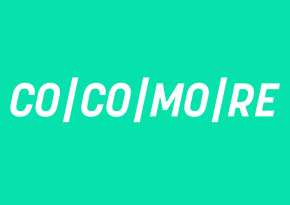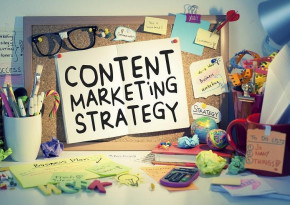"Read Me!" – Captivating online readers without clickbaiting
The internet has a flood of information available for every topic, no matter how absurd. This makes it even more important to stand out from others with unique content in order to reach potential readers. But how do you get them to click and read articles, too?
There are several options: through Google search results, social networks or directly through the company’s website. All touch points have to convince right from the start, because usually there is no second chance to captivate the user’s attention.

SEO Title and Headline – The Top Sellers of Any Article
In the Google hit list or the article itself – the user decides with the headline whether to click on the content or not. This is why it should sum up the topic as precisely as possible, after all the user wants to find exactly what he is looking for. When creating content, there are a few things to keep in mind:
- Headline: The headline should communicate the article’s main topic as interesting as possible and at a glance. It’s okay if it is a little longer and emotional.
Example: „Jaunty Hair Styles: This is How You Achieve Perfect Curls”
- SEO Title: Most of the time, the jack of all trades that covers as many keywords as possible is not the way to go. More importantly: The sharper and more precisely the Meta title is worded, the better it will match the target group’s search inquiry.
Example: „Curly Hair: Tips and Tricks for Styling“
Careful: No false promises should be made in the title or headline (which is the case with click baiting). This would leave the reader disappointed and frustrated at the end of the article – and he or she probably won’t come back.
Encouraging Clicks With the Teaser
The perfect spot to place a teaser is the welcome page. This way, the user gets a taste of the article in addition to the headline. There is only little space, though, to answer the most important questions for the reader:
- What can I expect?
- What kind of problem and which solutions are presented in the article?
- Why should I keep reading?
For the reader to really click on the article, a little “nudge” at the end can’t hurt. A “Call-to-Action” (CTA) prompts actively – but please not too pushy! – to continue reading. Here, content related CTAs such as “Discover delicious recipes” are usually more effective than a general “Learn more”.
- Keep in mind:
The teaser should leave some questions open that will be answered in the article later. After all, a good movie trailer doesn’t give away how it ends neither.
- Try to avoid:
The very common “click baiting” is meant to lure readers in. An example: “He only wanted to get his mail from the mailbox. You won’t believe, what he found!” Such a teaser raises high expectations, which most of the time are not met – a cause of frustration for the reader. In addition, click baiting doesn’t exemplify quality or integrity. The reader should feel assured to receive useful and credible information from the beginning.
This is How Reading Stays Interesting
Made it! The interested user clicks on the article and continues reading. This already leads us to the next challenge, because clicks alone won’t do it. After all, the reader should remain on the page and ideally recommend its contents. Therefore the text has to convince here as well.
It might be helpful to ask yourself these questions prior to composing the article:
- Who do I want to reach?
A website usually addresses a specific target group. Is the topic relevant for the target group? Which aspects offer the most value to the reader?
- What do I want to communicate?
Is it a promotional article? Does it explain a solution to a problem? Initially, the message of the article should be defined, otherwise you’ll quickly get lost in a broadly formulated topic.
- Would I like to read it myself?
An article should not only be written because the topic is current or ranks well. Readability and added value for the target group should clearly be the main focus.
Absolute No Go’s for Good Content:
- Copy & Paste
A website usually addresses a specific target group. Is the topic relevant for the target group? Which aspects offer the most value to the reader?
- Exuberant Keyword Accumulation
Keywords are important for Google rankings and are an integral part of search engine optimization. Nevertheless, they should be included in the article reasonably and discreetly, so that the user doesn’t get distracted from reading.
- Unstructured Text Blocks
Adequate paragraphs, subheadings as well as bullet lists not only improve readability but also score well with Google.
- Spelling and Grammatical Errors
An error-free text appears of higher quality and therefore more reputable.
And of course the writing style is important as well. Because depending on whether the reader feels addressed directly, the text is rather casual or factual, a kind of “character” that the target group can identify with can be formed for the website.
Saving the Best for Last?
Not quite. Of course, there should be an informative conclusion at the end. But a good closure doesn’t help if the reader quits before getting there. That’s why it is important to capture the reader from the beginning emotionally, build suspense or raise questions to which he just has to know the answer.
If the opportunity presents itself, the user can be motivated to comment or share the article in the end - this leads to higher reach. And this is where the circle closes: Good content makes readers happy and increases the probability of contents being recommended and this way standing out from the mass of posts.




